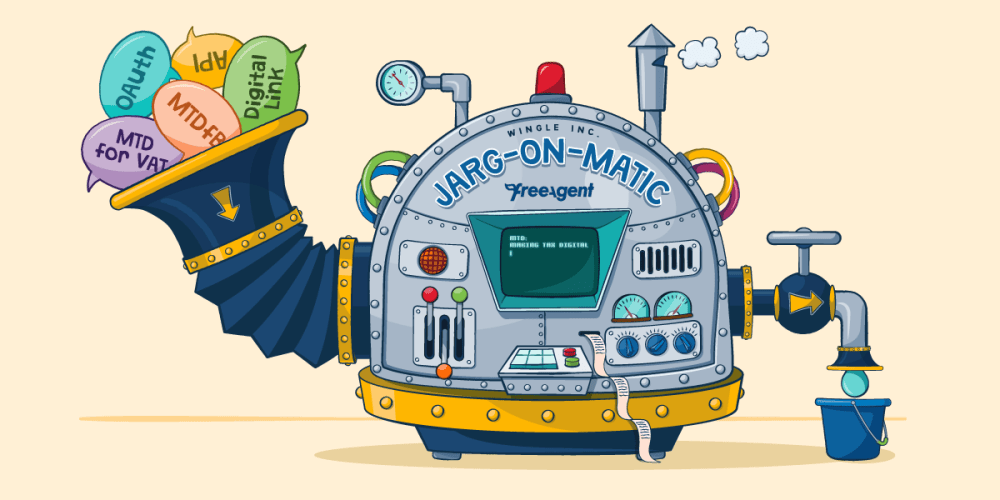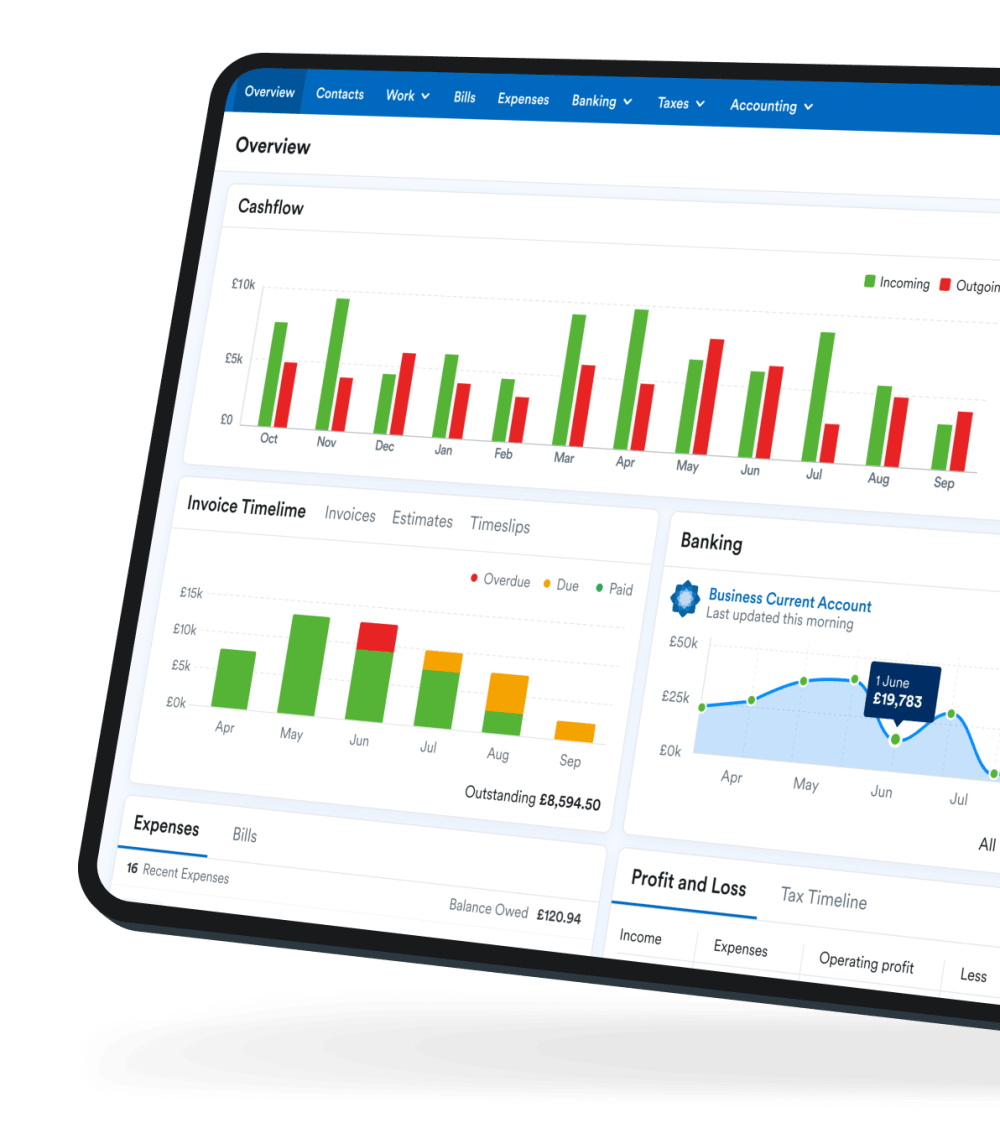Making Tax Digital (MTD) jargon buster

With Making Tax Digital (MTD) for Income Tax drawing ever nearer, we’re on a mission to make MTD as simple as possible for everyone.
With this in mind, we’ve put together a handy glossary of MTD terms to help you understand the language of digital tax legislation.
Accounting software
Accounting software refers to computer programs that businesses and accounting professionals use to process financial transactions, store financial data and automate certain bookkeeping and accounting tasks. Accounting software, like FreeAgent, enables users to complete a wide range of activities including sending invoices, creating accounting reports, running payroll and submitting tax returns to HMRC. Under MTD, taxpayers who are affected by the rules will need to use HMRC-recognised accounting software to make VAT and/or Income Tax submissions.
Agent
As a business owner, you can authorise an accountant, bookkeeper, friend or relative to help with your tax affairs and deal directly with HMRC on your behalf. This person is referred to as your ‘agent’.
Need to find an agent to help file your MTD for VAT returns or prepare for MTD for Income Tax? Head to our directory of accountants, where you’ll find someone who can help you get set up with FreeAgent’s MTD-compatible software.
Agent authorisation
Agent authorisation is the process of authorising an agent to deal with certain tax services on your behalf.
Annual summary
An annual summary is a set of summary data for a tax year. It contains all of your business’s allowances and adjustments, broken down by category.
Application Programming Interface (API)
An API enables two digital systems to talk to each other. In the case of MTD, an API enables your accounting software to send and receive information to and from HMRC.
Bridging software
Bridging software is a tool that links data stored in spreadsheets with HMRC, enabling VAT data to be submitted digitally. Be aware that bridging software may not fulfil all the requirements of MTD legislation, such as digital record keeping and maintaining digital links between data. Make sure you check with your accountant before committing to bridging software as a long-term MTD solution.
Business Tax Account (BTA)
A Business Tax Account is an online account with HMRC in which limited companies, partnerships, sole traders and landlords can view all their tax information online. You can already access your account but HMRC will add more features to this service as MTD continues to roll out.
Client
A client is a person or business that uses the services of an accountant or bookkeeper. If an agent manages your tax affairs, you are their client.
Digital link
A digital link is a connection from one piece of software to another. In the case of MTD, this is the connection between the software where you keep your accounts, and HMRC. Under the rules of MTD, you must maintain this digital link so you can submit regular updates to HMRC.
Final declaration
The final declaration is the process by which compatible accounting software will bring together all of the data you need to provide to HMRC to establish your tax responsibilities for a specific year under MTD for Income Tax. If you work with an accountant or bookkeeper, they may make corrections to accounts during the final declaration process.
Form 64-8
Form 64-8 is an HMRC tax form that authorises an agent to act on your behalf.
MTD-compatible
‘MTD-compatible’ means that a piece of software can meet all the demands of HMRC’s current MTD rules. This currently means that the software meets all the demands of MTD for VAT and/or MTD for Income Tax. FreeAgent is an example of MTD-compatible software for both these taxes.
MTD for VAT
Making Tax Digital (MTD) for VAT was the first major phase in the Making Tax Digital initiative. It first required certain VAT-registered businesses to keep digital tax records and use MTD-compatible software to submit their VAT returns electronically.
The scope of MTD for VAT expanded on 1st April 2022 and all VAT-registered businesses are required to follow these rules.
Here’s a complete guide on how to get ready for your first MTD VAT return from FreeAgent.
OAuth
With open authorisation, or ‘OAuth’, technology you can securely grant websites and applications access to information that’s held in an online account without the need for a password. OAuth 2.0 is the technology that will enable accounting software to access the information in your HMRC online account.
Obligations
Obligations, or obligation periods, describe the periods of time for which taxpayers must provide information on their income and expenses under MTD for Income Tax rules.
The timing of each taxpayer’s obligations are based on whether they opt for standard update periods, which align with the tax year, or calendar update periods, which align with the end of the month with 31st March being the effective end of the year. Under standard update periods, the sole trader’s obligation periods will be:
- 6th April - 5th July
- 6th July - 5th October
- 6th October - 5th January
- 6th January - 5th April
And under calendar update periods, the sole trader’s obligation periods will be:
- 1st April - 30th June
- 1st July - 30th September
- 1st October - 31st December
- 1st January - 31st March
Personal Tax Account (PTA)
A Personal Tax Account (PTA) is an online HMRC account from which individuals can access information about their tax liabilities. This includes information like tax codes, benefits payments and tax paid through PAYE.
Quarterly updates
Quarterly updates are summary reports of your income and costs that are sent to HMRC four times a year under MTD for Income Tax. You would prepare and file these for quarters ending evenly through the year finishing either on 5th April (standard quarters), or on 31st March (calendar quarters).
Two-step verification (2SV)
Two-step verification (2SV) is a system used to make logging into an online account more secure. To log into a system with 2SV you’ll be required to provide an additional piece of information after you’ve entered your username and password. This is often a code that’s either generated by another app or sent to your mobile phone.
2SV is used to confirm your identity when you connect MTD-compatible software with your HMRC account. HMRC will send a six-digit code to your mobile or landline which you’ll have to enter to grant the software permission to interact with HMRC on your behalf. You may also need to confirm your identity by answering some security questions.
That covers the majority of the terminology you’re likely to encounter on the topic of Making Tax Digital. Now that you’re fluent in the language, why not take a look at how signing up to FreeAgent can make the transition to digital tax as painless as possible.
Disclaimer: The content included in this guide is based on our understanding of tax law at the time of publication. It may be subject to change and may not be applicable to your circumstances, so should not be relied upon. You are responsible for complying with tax law and should seek independent advice if you require further information about the content included in this guide. If you don't have an accountant, take a look at our directory to find a FreeAgent Practice Partner based in your local area.
